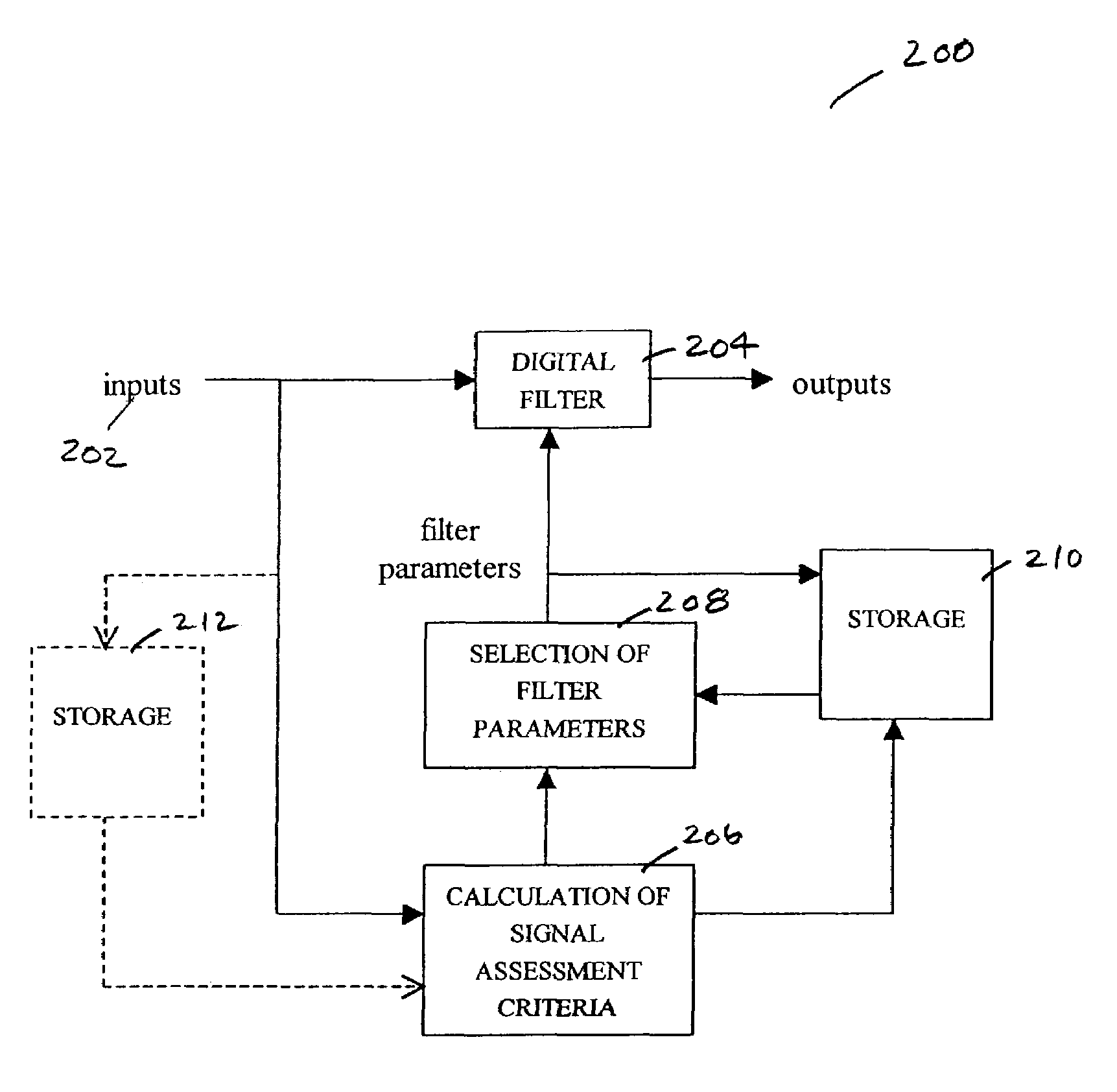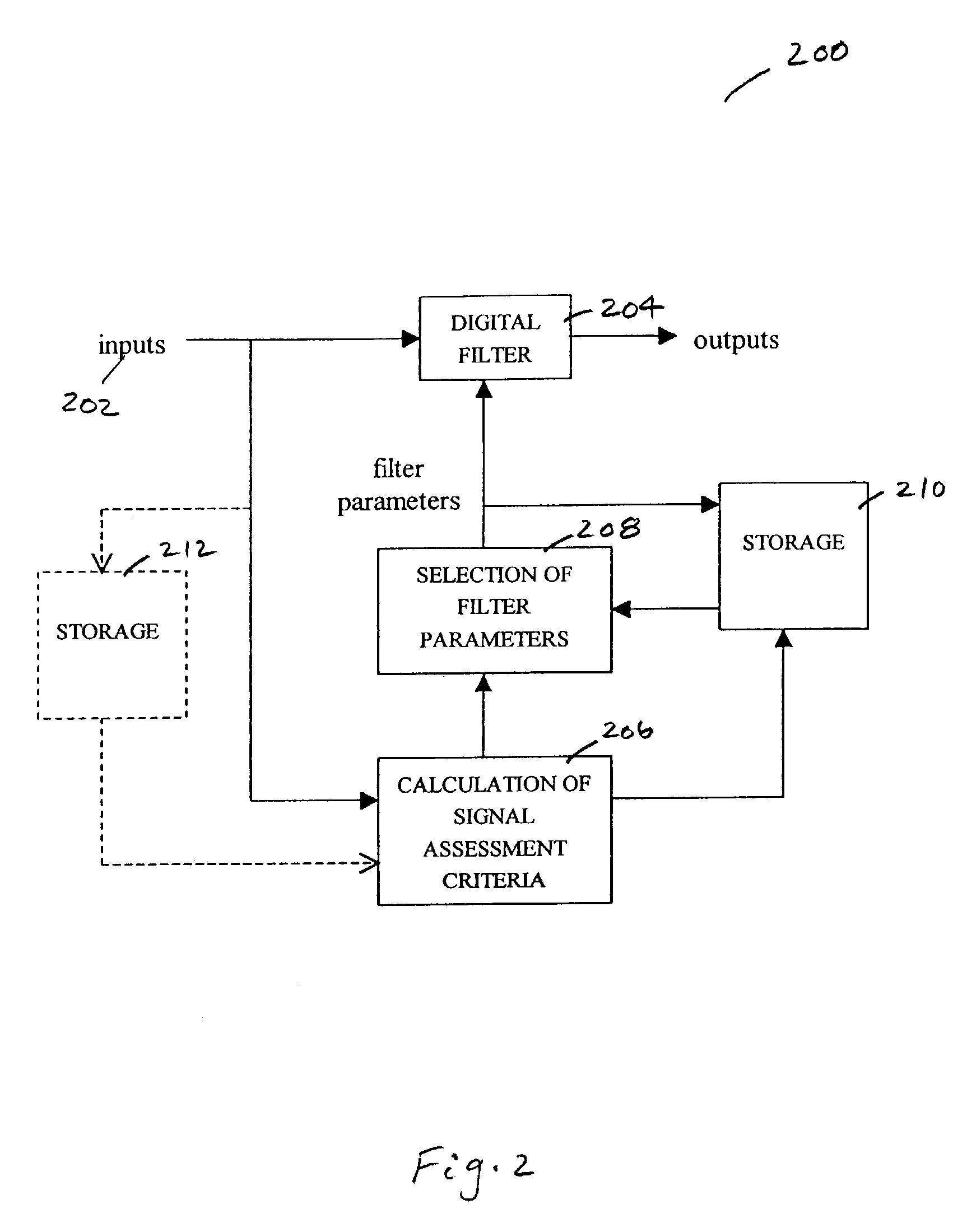Selection of preset filter parameters based on signal quality
a filter parameter and signal quality technology, applied in the field of signal processing, can solve the problems of constant tuning of filter parameters, method that is somewhat blind regarding the signal being filtered, and approach that does not take into account, so as to reduce noise effects
- Summary
- Abstract
- Description
- Claims
- Application Information
AI Technical Summary
Benefits of technology
Problems solved by technology
Method used
Image
Examples
Embodiment Construction
[0014]The methods and systems in accordance with embodiments of the present invention are directed towards selecting and adjusting the parameters of a digital filter based an assessment of the quality of the input signals to the filter. The invention is particularly applicable to and will be explained by reference to measurements of oxygen saturation of hemoglobin in arterial blood and patient heart rate, as in pulse oximeter monitors and pulse oximetry sensors. However, it should be realized the invention is equally applicable to any generalized patient monitor and associated patient sensor, such as ECG, blood pressure, temperature, etc., and is not to be limited for use only with oximetry or pulse oximetry.
[0015]FIG. 1 is a block diagram of one embodiment of a pulse oximeter that may be configured to implement the embodiments of present invention. The filter embodiments of the present invention can be a data processing algorithm that is executed by the microprocessor 122, describe...
PUM
 Login to View More
Login to View More Abstract
Description
Claims
Application Information
 Login to View More
Login to View More - R&D
- Intellectual Property
- Life Sciences
- Materials
- Tech Scout
- Unparalleled Data Quality
- Higher Quality Content
- 60% Fewer Hallucinations
Browse by: Latest US Patents, China's latest patents, Technical Efficacy Thesaurus, Application Domain, Technology Topic, Popular Technical Reports.
© 2025 PatSnap. All rights reserved.Legal|Privacy policy|Modern Slavery Act Transparency Statement|Sitemap|About US| Contact US: help@patsnap.com



